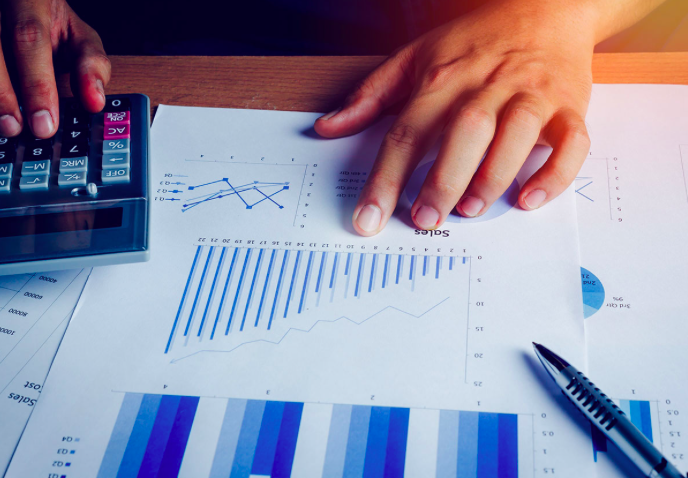This article is written by Avinash Kumar, a 3rd-year law student from School of law, UPES Dehradun. In this article, he discusses the “Calculation of Depreciation Under The Income Tax Act 1961”. He also discusses the written down value method and additional depreciation under the Income Tax Act.
Table of Contents
Introduction
The provision for allowing depreciation is contained in Section 32 of the Income Tax Act, 1961 and is regulated under Rule 5 of the Income Tax Rules. When there is a decline in the value of the tangible or intangible asset used by the assessee, then the deduction is permissible under the Income Tax Act. While at the time of the deduction, the income-tax department calculates the depreciation on the total cost of an asset over the life of the asset. An assessee can calculate the deduction caused by depreciation under a straight-line method or by written line method (WLM). The income tax department uses the concept of a written line method (WLM). However, at the time of deducting depreciation, generating or distribution of power, the Income-tax department uses the concept of “Additional general method”. In certain circumstances, the Income Tax Act allows a deduction for additional depreciation in the year of purchase.
Meaning of depreciation under the Income Tax Act
Section 32 of the Income Tax Act 1961 talks about depreciation. Depreciation is defined as a reduction in the value of the asset due to wear and tear of the asset. People claim the deduction of depreciation only for accounting or for the purpose of taxation.
Income Tax Act of 1961 allows the depreciation of tangible assets and intangible assets. In the case of a tangible asset, you can claim the deduction against building, plant, and machinery. In the case of an intangible asset, you can claim a deduction against the patents, trademark, copyright, license, franchise or any other business or commercial right of similar nature. You can claim the deduction on depreciation on those assets which have been used by the assessee for the purpose of business or profession during the previous year.
If any asset which has been used for more than 180 days then 50% of depreciation is allowable in that year. For availing the benefit of deduction under depreciation, it is not mandatory that assets should be used by the assessee in the previous year. If an asset is purchased by the assessee and then leased out to the lessee, the assessee can claim the deduction of depreciation under the Income Tax Act.
Rates of depreciation
Rates of depreciation on the following assets:
- Building for residential use: 5%;
- Building for non-residential use: 10%;
- Furniture and fittings: 10%;
- Computers including software: 40%;
- Plant and machinery: 15%;
- Motor vehicles for personal use: 15%;
- Motor vehicles for commercial use: 30%;
- Ships: 20%;
- Aircraft: 40%;
- All intangible assets: 25%.
To know more about the depreciation rate on different assets you can click here
Condition for claiming depreciation under Income tax
For availing the deduction on depreciation, an assessee will have to fulfill some conditions. These conditions are as follows:
- Classification of Assets: For availing the benefit of depreciation, the owner of the asset should be an assessee. The asset can be tangible or intangible. With respect to a tangible asset, the asset should be a building, machinery, plant or furniture. With respect to intangible assets, assets should be patent rights, copyrights, trademark, license, franchise or any similar nature which is acquired on or after 1.04.1998. While calculating the depreciation on the building, the income tax department calculates the depreciation only on the building. They don’t calculate the cost of the land on which the building is situated. The reason behind not including the cost of the land into the building is that land does not suffer any depreciation because of wear and tear or its usage.
- Ownership vs lease: An assessee can claim the depreciation only on those capital assets which are owned by him. If the assessee wants to avail the deduction on the depreciation of building then assessee should be the owner of those buildings. It is not necessary that an assessee should be the owner of that land. If an assessee has constructed the building but the land belongs to someone else then he has a right to claim the deduction of depreciation on buildings. If the assessee is a tenant or using the building then he can’t claim the deduction. If an assessee has taken the lease of the land and has constructed a building on that land, he is entitled to avail the allowances of depreciation. In the case of hire and purchase, if an assessee hires the machinery for a short period of time then, in that case, he is not entitled to claim the deduction. But, in case of purchase, if an assessee acquires the property and becomes the owner of the property he is entitled to claim the deduction.
- Used for the purpose of profession or business: for availing the allowance for depreciation, it is necessary that the asset has been used for the purpose of business or profession. However, it is not necessary for availing the allowance for depreciation, for which an assessee will have to use the asset throughout the accounting year. Thus, if the assessee has used the asset for a small period of time in an accounting year then he is entitled to avail the allowances for depreciation. You can take the example of any seasonal factory. Let’s take the example of sugar factories. Sugar factories don’t open for a whole year but if the asset has been used at any time during the accounting year in a factory then in such conditions factory owners are entitled to claim depreciation. Under Section 38 of the Income Tax Act 1961, the income tax officer has a right to determine the proportionate part of the depreciation.
- Can’t claim the deduction on sold assets: An assessee can not claim the deduction on depreciable assets. If an asset is sold, destroyed or demolished in the same year when it was acquired then assessee can not claim the deduction.
- If an asset has a co-owner then the co-owner can also claim the depreciation on the asset.
Written down value method (Block wise)
Every year the book value of the asset decreases and depreciation of the asset is computed on the book value of the asset. The written down value (WDV) method is the best way to calculate the depreciation of the asset because the depreciation amount goes on decreasing with time. Section 32(1) of the Income Tax Act 1961 says that depreciation should be computed at the prescribed percentage on the WDV of the asset, which in turn is calculated with reference to the actual cost of the asset. When an assessee is acquiring the asset in the previous year then the actual cost becomes the WDV. While the asset acquired in earlier year WDV shall be equal to the actual cost incurred less depreciation allowed under the Act.
This may be easily followed by the following example:
Depreciable assets on 1.04.2017 on which the depreciation is available at the same rate of 25%.
|
Asset A |
3,00,000 |
|
Asset B |
5,00,000 |
|
Asset C |
7,00,000 |
|
Total |
15,00,000 |
|
Less: Depreciation @ 25% of 15,00,000 |
(3,75,000) |
|
1. Written down the value on 1.4.2018 of a block of the asset. Add: Cost of Asset purchased during 2018-19 |
11,25,000 6,00,000 |
|
Ii. Balance Asset B sold during the year 2018-19 |
17,25,000 (6,75,000) |
|
iii) Balance Less: Depreciation for 2018-19 @ 25% of Rs. 10,50,000 |
10,50,000 (2,62,5000) |
|
Written down value of all assets on 1.04.2019 |
7,87,500 |
Additional depreciation under the Income Tax Act
The Income Tax Act only permits the written down value method. As per the Additional depreciation method, you can get the deduction only on those assets which have been used in the business or profession. However, an assessee can get the deduction only when assets are used in the year in which it was purchased. But as per the new amendment in the Income Tax Act, 1961, Section 32(1)(iia) says that an assessee can get depreciation of 20% on those plants and machinery which have been involved in the business of manufacture or production of an article. For availing the deduction under additional depreciation the purchase and installation date should be after the 31st March 2005. An assessee can not avail of the additional depreciation on aircraft and ships. These are excluded from additional depreciation.
From the assessment year 2013-14, a new provision has been added. Further, from 2017-18, another new provision has been added in the Income Tax Act, 1961 which says that those assessees who are involved in the profession of power, can also avail the benefits of the additional depreciation. If an asset has been used for less than 180 days then additional depreciation is allowed at 50% of the rate of additional depreciation.

Depreciation in backward area
From 1st April 2016, Section 32(1)(iia), of the Income Tax Act, 1961 allows the possibility of depreciation in the backward areas. If an assessee sets up a business of manufacturing or production in any backward state (Bihar, Andhra Pradesh, Telangana, West Bengal) then, the additional depreciation available to those assessees is 35%, not 20%. Shifts and aircraft are excluded from the additional depreciation. However, an assessee can purchase and install the machinery.
Who is non-eligible for the additional depreciation?
As per Section 32(1)(iia) of the Income Tax Act, 1961, if an assessee fulfills the below conditions, they are not eligible for availing the deduction under additional depreciation:
- Additional depreciation can not be claimed on plants and machinery which has been used outside India, before being installed in India.
- You cannot claim the deduction on those plants and machinery which have been installed in the office premises or in residential accommodation.
- An assessee can not claim the deduction under additional depreciation on assets such as furniture, buildings, ships, aircraft, office appliances, the vehicle used in road transport, residential accommodation including in the nature of the guest house.
Additional depreciation to the generation of electricity
Deduction on additional depreciation is permissible only for that assessee who is involved in the production. A matter of conflict has been raised by the assessee who was generating the electricity. However, a certain amendment has been made by the parliament for allowing the additional depreciation to the assessee.
A claim was raised by the assessee, a joint venture company which was involved in thermal power plant for availing the benefit of deduction on additional depreciation under Section 32(1)(iia) of the Income Tax Act. However, an assessing officer rejected the claim on the ground that this type of benefit will only be granted to the assessee who is involved in the production of an article and this does not include the generation of electricity. After that, the Income-tax department served the notice to the assessee under Section 154 of the Income Tax Act 1962 the assessee gave an explanation to the income-tax officer which was not accepted by the assessing officer.
In 2013, Section 32(1)(iia) of the Income Tax Act was amended and after the amendment Income Tax Act 1961, made a provision that says that additional depreciation could be granted to an entity that is involved in the business which generates and distributes power. In the case of the State of Andhra Pradesh vs NTPC, the Supreme Court held that electricity is able to be transmitted, transferred and delivered. So on this logic, the Income-tax Officer can not deny an assessee from claiming additional depreciation for generating electricity. The Supreme Court gave the judgment in favor of the assessee and held that an assessee who is generating electricity can claim the deduction of additional depreciation under Section 32 (1)(iia) of the Income Tax Act, 1961.
Conclusion
Section 32 of the Income Tax Act, 1961 allows compulsory deduction on account of depreciation. However for claiming the deduction under section 32 of the Income Tax Act, 1961 an assessee has to fulfill some conditions. The written down method is one of the best ways of calculating depreciation under the Income Tax Act. As per Section 32(1)(iia) of the Income Tax Act, 1961, an assessee can claim the additional depreciation. Depreciation helps the assessee in many ways, sometimes it helps in financial management and sometimes this serves as a tax saving option.
References
- Income Tax Act, 1961.
- Tax law book by Taxman.
- https://cleartax.in/s/depreciation-income-tax-act
Students of Lawsikho courses regularly produce writing assignments and work on practical exercises as a part of their coursework and develop themselves in real-life practical skill.
https://t.me/joinchat/J_0YrBa4IBSHdpuTfQO_sA
Follow us on Instagram and subscribe to our YouTube channel for more amazing legal content.
 Serato DJ Crack 2025Serato DJ PRO Crack
Serato DJ Crack 2025Serato DJ PRO Crack










 Allow notifications
Allow notifications


